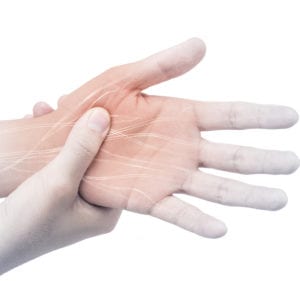
Is It Possible to Relieve Nerve Pain at Home?
Living with nerve pain can be extremely painful. While some neuropathic pain may get better on its own or with treatment, it can sometimes take months or years. Conversely, other nerve pain may stay persistent or increase over time. Fortunately, there are ways you can relieve nerve pain at home. If your nerve pain continues even after trying these methods, contact the board-certified doctors at NJ Spine & Orthopedic. We can help you identify and treat neuropathic pain with a therapy plan specific to you. What Causes Nerve Pain? Neuropathic pain comes from nerve damage, which may result from medical conditions, medications, or injuries. Damaged nerves are more likely to misfire, sending pain signals to your nerve when there is no cause of pain. Damaged nerves are also more likely to cause a foot infection. If you are uncertain about where your nerve pain originates, take our online Pain Assessment Tool. You can then discover what treatment options are best for you through our Treatment Finder. Ways to Relieve Nerve Pain at Home In addition to relieving nerve pain, many at-home treatments may help prevent more severe problems and protect your health. Some strategies may even release the body’s natural painkiller, endomorphins. Here are a few ways to relieve nerve pain at home: Monitor your diabetes: If you have diabetes, ensure your blood sugar is at appropriate levels. This is one of the best ways to alleviate and possibly prevent nerve pain. Go for a walk: Exercise releases endorphins and promotes blood flow to the nerves in the legs and feet. Take daily walks and gradually increase your distance and pace. Regular exercise may create a long-lasting expansion in the feet’s blood vessels, nourishing damaged nerves back to health. Take a warm bath: A warm bath is one of the easiest ways to treat nerve pain at home. Warm water temporarily increases blood flow to the legs and eases stress. While this relief is only temporary, it can still decrease discomfort. Avoid alcohol: Heavy alcohol use is toxic to nerves and may worsen your pain. While the number of alcoholic drinks will vary, doctors recommend having no more than four alcoholic drinks a week. Practice good sleep habits: Nerve pain can worsen overnight, making it more challenging to deal with pain. However, you can break this cycle by practicing good sleep habits. Limit afternoon caffeine and keep a consistent bedtime that allows you to receive eight hours of sleep nightly. Numb the pain: The anesthetic lidocaine, which you can find in gels, ointments, and patches, is available in prescription and over-the-counter medication. While lidocaine can cause relief, it is only temporary. Make sure to read the instructions carefully before using. Contact the Experienced Back Doctors at New Jersey Spine & Orthopedic If you are suffering from nerve pain, contact the board-certified doctors at NJ Spine & Orthopedic. Our team of neurologists, neurosurgeons, and orthopedic specialists will work with you one-on-one to eliminate the pain that’s plagued you for so long.


